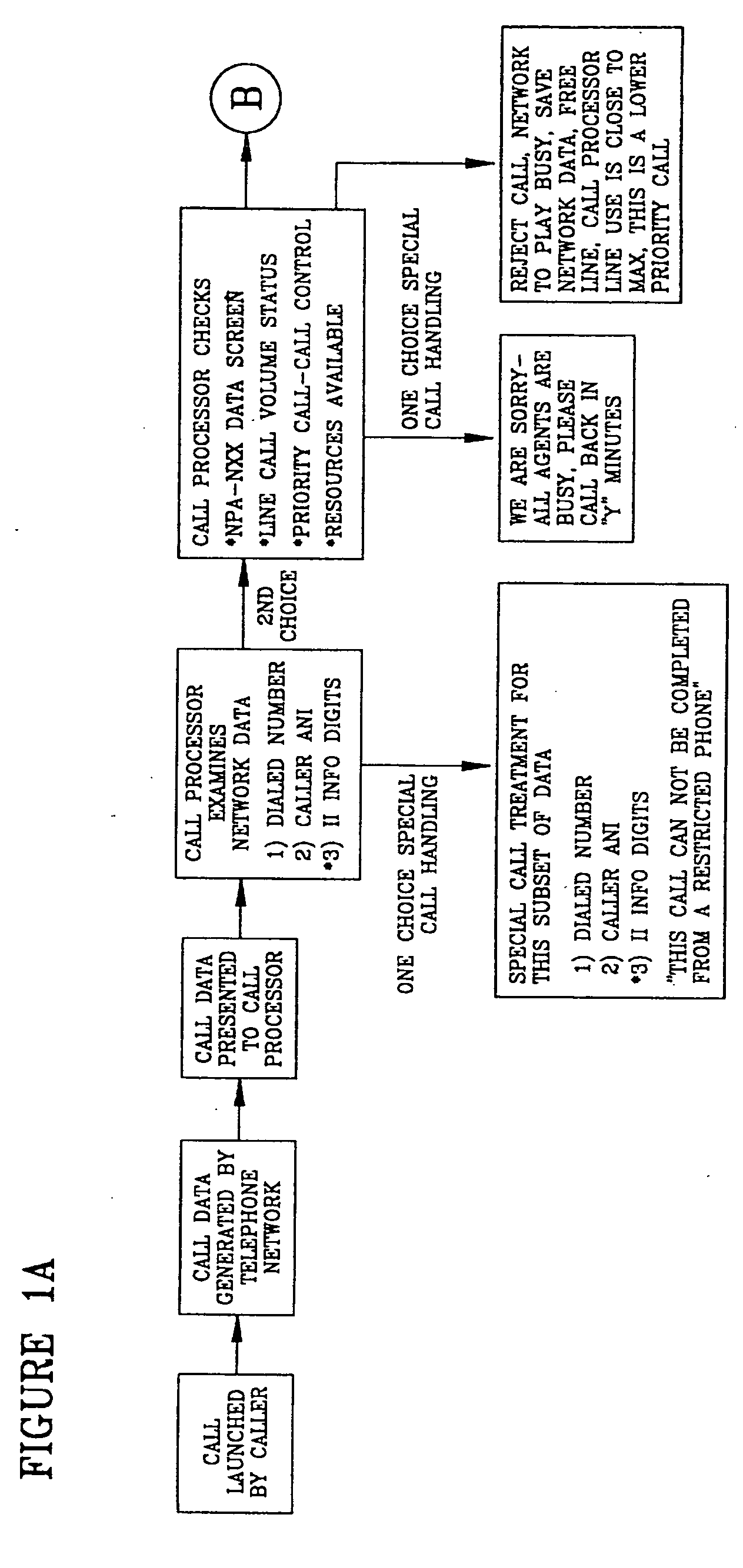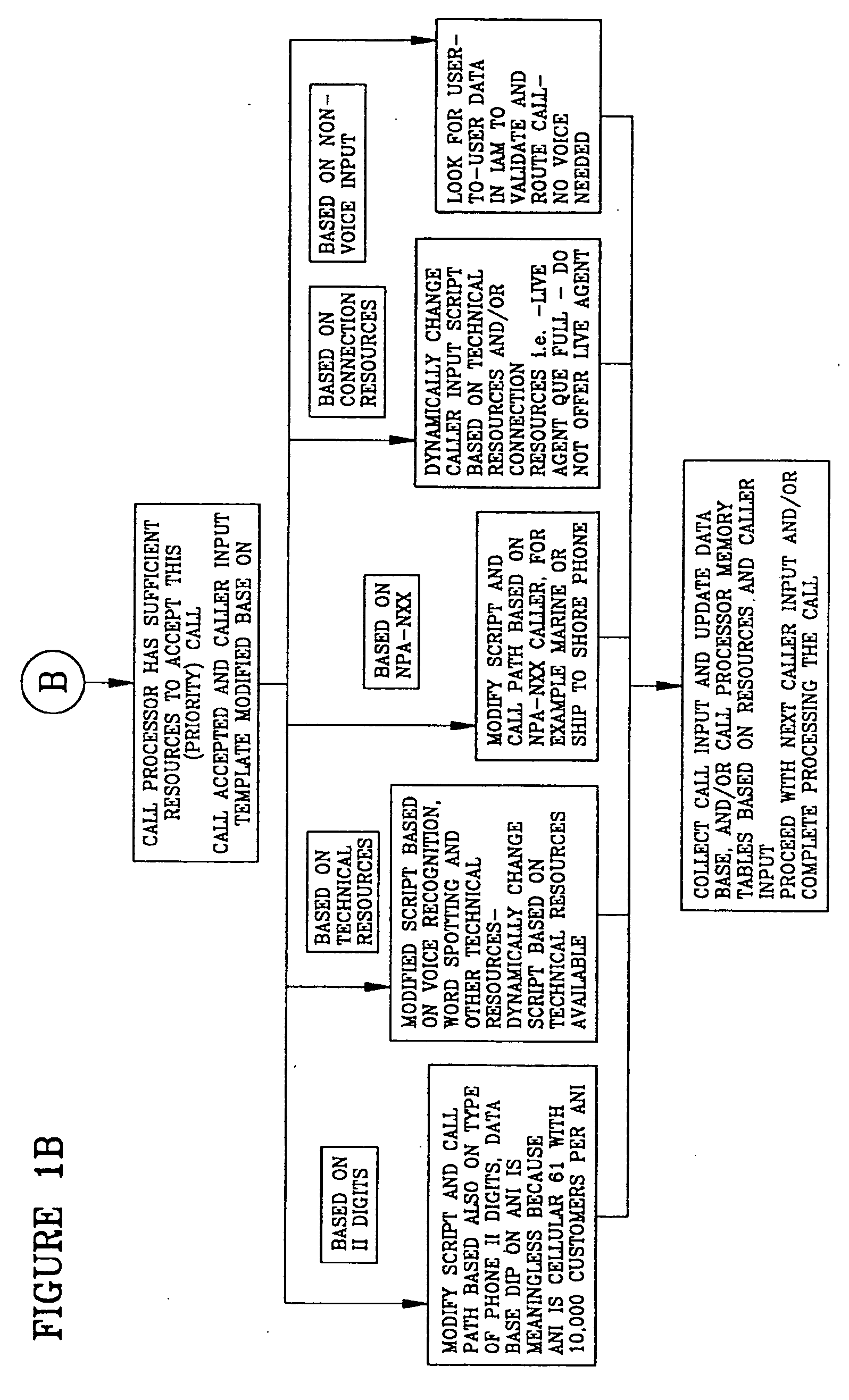Call processing system with call screening
a call processing system and call processing technology, applied in the field of call processing system with call screening, can solve the problems of statistical analysis and unique caller input format selection, low geographic accuracy of information collected to date about a calling party by the telephone system, and inability to accurately represent the geographic location of the calling party, etc., to achieve greater routing definition, less travel time, and more geographic precision
- Summary
- Abstract
- Description
- Claims
- Application Information
AI Technical Summary
Benefits of technology
Problems solved by technology
Method used
Image
Examples
example # 1
Example #1
[0365] Electronic transcription for 80-90% of the Callers. A Caller dials a number (800, POTS, etc.) to request literature on a product (or Service). The program describes the product and the literature that is to be sent and then asks the Caller to first speak (and / or touch tone) the 10 digit phone number to where the literature that describes the product is to be mailed (sent). The program accesses the street address database by ANI to see if the street address is already known and whether the address is residential, business at home, or commercial.
Assume a business at home address is returned by the database:
[0366] The program would explain to the Caller that it believes it already has the address for the number given, and if the Caller would confirm the street number, i.e. the Caller's street number is “1190” yes / no and the Caller's ZIP Code is “43081” yes / no. Since the database has over 90% of the residential addresses and business at home addresses for ANI's, if t...
example # 2
Example #2
[0368] Similar to Example #1 above, assume that the number given is a residential phone number which is looked up and confirmed by the Caller, but additional information is asked from the Caller, such as a marketing survey (where ad was seen, quality of ad, first time product ever considered) and other responses are collected. These responses may be through key word voice recognition, touch tone input, and / or words spoken by the Caller that are later transcribed. For the data type response such as touch tone and / or voice recognition, this data is added to the already stored name and address data for this call which is already in electronic form. The use of the ANI keyed database and the confirmation of the data saves the Caller time in responding to questions to collect data that is available from an ANI keyed database.
[0369] In Example #2 above, assume that some of the data collected from the Caller was collected as spoken audio in the Caller's voice. In addition, the sp...
example # 3
Example #3
[0370] The phone number supplied by the Caller is retrieved by the ANI keyed database as a business, or is not found in the database, or the Caller rejects the address retrieved by the database—in these cases the phone number given would be treated just as data and the Caller would need to provide all data (i.e. name, address, city, state, ZIP) plus any other data to be collected. This data may be recorded in the Caller's voice for later transcription in combination with data collected by the call processor through touch tone input, voice recognition, etc., and the different data sets may again be linked using a “unique key” described in Example #2 above, or the call may be transferred to a live agent which would ask, and may on-line transcribe and summarize, the Caller's inputs.
[0371] For many databases, the Caller's ANI (or the Calling Number) is not the significant data item. For many applications, knowing the true Caller identifier and then validating this number is o...
PUM
 Login to View More
Login to View More Abstract
Description
Claims
Application Information
 Login to View More
Login to View More - R&D
- Intellectual Property
- Life Sciences
- Materials
- Tech Scout
- Unparalleled Data Quality
- Higher Quality Content
- 60% Fewer Hallucinations
Browse by: Latest US Patents, China's latest patents, Technical Efficacy Thesaurus, Application Domain, Technology Topic, Popular Technical Reports.
© 2025 PatSnap. All rights reserved.Legal|Privacy policy|Modern Slavery Act Transparency Statement|Sitemap|About US| Contact US: help@patsnap.com



